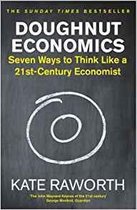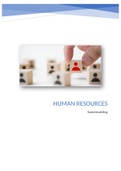English: Oral exam 2019 – 2020
Part A – Practical skills
1. Describing statistics
A. Large numbers
UK (BrE) US (AmE)
1 000 a/one thousand a/one thousand
100 000 a/one hundred thousand a/one hundred thousand
1 000 000 a/one million a/one million
100 000 000 a/one hundred million a/one hundred million
1 000 000 000 a/one thousand million a/one billion
100 000 000 000 a/one hundred thousand million a/one hundred billion
1 000 000 000 000 a/one billion a/one trillion
In BrE, and is always put between hundred/thousand/million and numbers below a hundred. In AmE,
and can be dropped.
310 three hundred (and) ten
5,642 five thousand, six hundred (and) forty-two
2,025 two thousand (and) twenty-five
In writing, commas or spaces are generally used to divide large numbers into groups of three figures,
separating off the thousands and the millions. Full stops (.) are not used in this way.
3,127 OR 3 127 (NOT 3.127)
5,466,243 OR 5 466 243
Commas or spaces are not always used in four-figure numbers, and they are not used in dates.
4,126 OR 4 126 OR 4126
the year 1648
Note the hyphen between the tens and units in twenty-one, twenty-two, thirty-six, forty-nine, etc.
when these are written in words.
, B. Fractions and decimals
Simple fractions are pronounced like the following:
1/3 a/one third
¼ a/one quarter; a/one fourth (AmE)
⅛ an/one eighth
³⁄₇ three sevenths
⅖ two fifths
¹¹⁄₁₆ eleven sixteenths
3¾ three and three quarters (three fourths; AmE)
6⅛ six and one eighth
More complex fractions can be expressed by using the word over:
³¹⁷⁄₅₀₉ three hundred and seventeen over five hundred and nine
We write and say decimals like this:
0.4 nought/zero point four (NOT 0,4 or nought comma four)
0.375 nought/zero point three seven five (NOT nought point three hundred and seventyfive)
4.7 four point seven
C. Fractions and percentages
25% = ¼ = a/one quarter; a/one fourth (AmE)
33% = 1/3 = a/one third
50% = (exactly) a/one half
66% = 2/3 = two thirds
75% = ¾ = three quarters / three fourths (AmE)
Adverbs such as nearly, around, almost, approximately, (just) about … can be used to discuss
percentages that approximate these numbers.
51% just over a half
32% nearly a third
26% roughly one quarter
73% nearly three quarters
49% around a/one half
77% approximately three quarters
, D. Dates
30 March 1993 = ‘March the thirtieth, nineteen ninety-three’ (AmE also ‘March thirtieth …’) OR ‘the
thirtieth of March, nineteen ninety-three’
1200 = twelve hundred
1305 = thirteen hundred and five OR thirteen oh five
1498 = fourteen (hundred and) ninety-eight
1910 = nineteen (hundred and) ten
1946 = nineteen (hundred and) forty-six
2000 = two thousand
2005 = two thousand and five or twenty oh five
2020 = two thousand and twenty or twenty twenty
E. Currencies
a) The pound (£)
There are 100 pence in a pound. Sums of money are named as follows:
1p one penny
5p five pence
£3.75 three pounds seventy-five (pence) OR (more formal) three pounds and seventy-five
pence
b) The dollar ($)
There are 100 cents (¢) in a dollar ($). One-cent coins are called pennies; five-cent coins are nickels;
ten-cent coins are dimes; a twenty-five-cent coin is a quarter.
1¢ one cent
5¢ five cents
$3.75 three dollars seventy-five (cents) OR (more formal) three dollars and seventy-five
cents
c) The euro (€)
There are 100 (euro) cents in a euro (€).
1c one cent
5c five cents
€3.75 three euros seventy-five (cents) OR (more formal) three euro and seventy-five cents
, F. Usage
a) Verbs to describe an upwards trend:
• to rise
• to go up
• to double
• to jump
• to increase
• to grow
b) Verbs to describe a downward trend:
• to decrease
• to decline
• to drop
• to reduce
• to shrink
c) A noun to describe an upwards trend:
• an increase
d) A noun to describe a downwards trend:
• a drop
e) An adverb/adverbial expression
• (have gone up) slightly
f) Adjectives
• (a) minor (drop)
• (the) average (amount of money)
• (the) median (household income)
• (the most) recent (rate)
• (a) record (level)
g) Other expressions to describe trends
• Fall far short
• To hit (a record level)
• The growth has stopped
• To be higher/lover than / to be the same as






